 |
||||||||||||||
The Delta Clipper Experimental (DC-X) Single Stage Rocket Technology (SSRT) demonstration vehicle was constructed by McDonnell Douglas in Huntington Beach, California. It's purpose was to show the feasibility of vertical take-off-and-landing for a future generation of space launchers, and possibly lead to the eventual advent of Single Stage To Orbit (SSTO). This vertical launch and landing technology is now used successfully by SpaceX for their Falcon 9 and Falcon Heavy rocket boosters, and hopefully with their future Starship booster. Blue Origin also uses this technology. However, the idea of SSTO has yet to be achieved.
Mach 25 Media attended two launches of the DC-X and one launch of the DC-XA from 1994 through 1996, along with several visits to the McDonnell Douglas factory during various upgrades of the vehicle. These pages document those events.
Note that all DC-X and DC-XA flights occurred at the White Sands Missile Range in New Mexico. |
||||||||||||
Flight Test series
Phase One Flight 1. 18 August 1993 Flight 2. 11 September 1993 Flight 3. 30 September 1993
Phase Two Flight 4. 20 June 1994 Flight 5. 27 June 1994
Phase Three Flight 6. 16 May 1995 Flight 7. 12 Jun 1995 Flight 8. 7 July 1995
Phase Four (DC-XA) Flight 9. 18 May 1996 Flight 10. 7 June 1996 Flight 11. 8 June 1996 Flight 12. 31 July 1996 |
||||||||||||
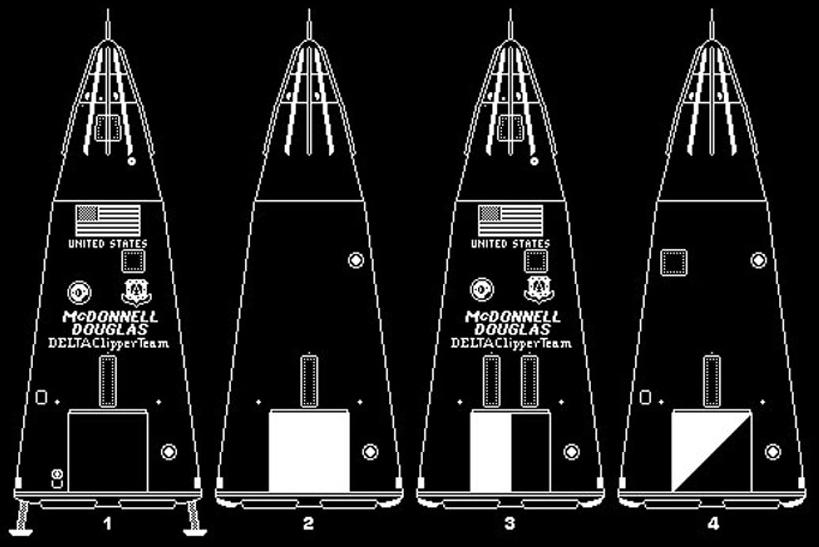 |
||||||||||||
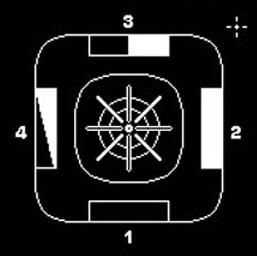 |
||||||||||||
This set of Delta Clipper Experimental drawings was created by Michelle Evans for the Fantastic Plastic model company to show the basic paint scheme and markings used on the vehicle. The decals on the actual vehicle burned off with the first engine firing, so were never seen in any images of the DC-X or DC-XA in flight. The step appearance for the angled sides of the aeroshell is due to the use of a very old bitmap graphics program on the Macintosh computer called SuperPaint. |
||
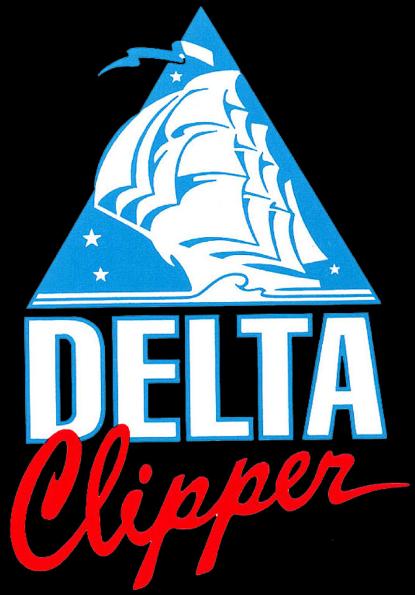 |
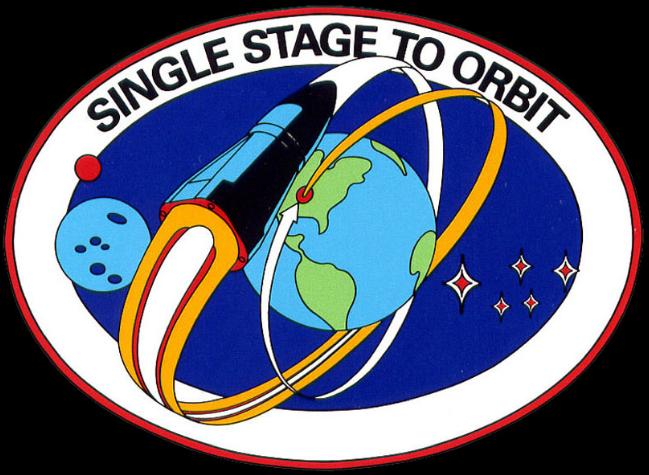 |
|||||
The logo for Single Stage To Orbit. This design came from McDonnell Douglas, and featured the Delta Clipper as the foundation of what was hoped would to lead to this technology. |
||||||
The Delta Clipper logo. |
||||||
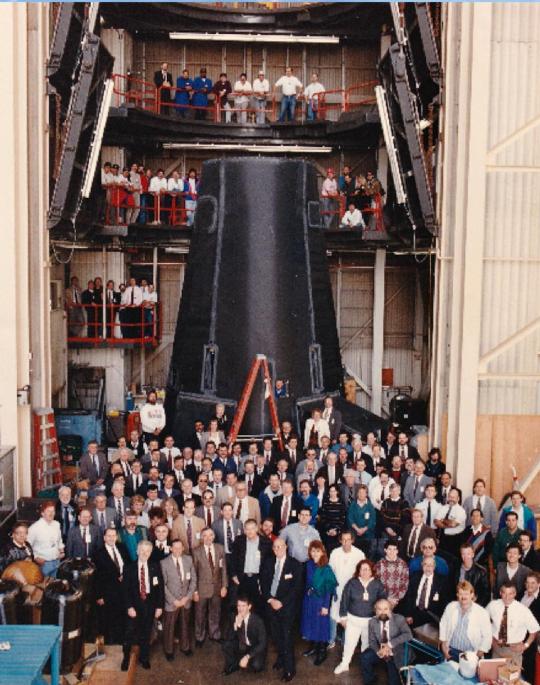 |
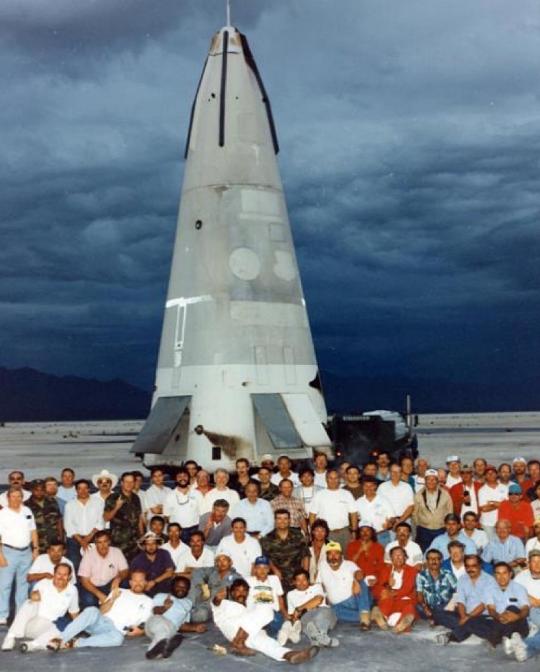 |
|||
The DC-X team at White Sands following the first flight of the vehicle on 18 August 1993. Note the two-tone paint on the vehicle. Also seen are where the decals were burned off at the moment of ignition on the first engine test.
McDonnell Douglas image, courtesy of Jeff Laube |
||||
The Deta Clipper Team at the McDonnell Douglas plant in Huntington Beach, California, while the DC-X was under construction.
McDonnell Douglas image, courtesy of Jeff Laube |
||||
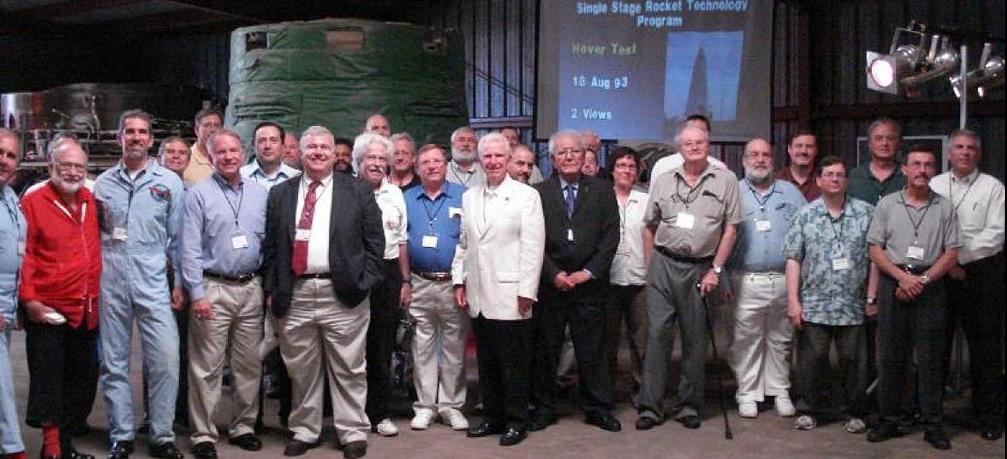 |
||
The Delta Clipper Team celebrate the 15th anniversary of the first flight on 17 August 2008 in Alamogordo, New Mexico.
McDonnell Douglas image, courtesy of Jeff Laube |
||
— DC-X Flight 5: 27 June 1994 — |
||
This flight was unique in that a hydrogen cloud exploded at liftoff, and blew a huge hole in the side of the vehicle. Instead of completing the intended mission, an auto abort was intitated by Pete Conrad. The DC-X returned safely to land on the gypsum. Any other rocket would have almost certainly been lost. I said at the time it happened, that this would be the type of rocket I would want to ride on, where you can blow a giant hole in the side and yet still land safely!
All photos by Michelle Evans, unless otherwise noted. |
Geology of White Sands
The White Sand Missile Range is located in the Tularosa Basin, and the great expanse of gypsum is the dried Pleistocene lakebed of Lake Otero. To the west lies the San Andreas Mountains, while to the east is the Sacramento Mountains. It is a beautiful area to visit with a rich history in aerospace. In nearby Alamogordo, be sure to visit the New Mexico Museum of Space History. |
|||
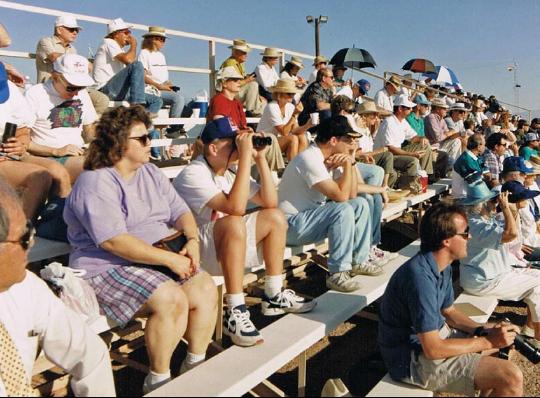 |
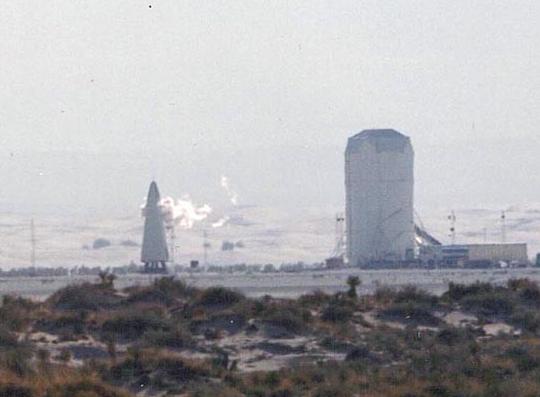 |
|||
Spectators awaiting liftoff of Delta Clipper Experimental Flight 5. |
Venting just prior to engine ignition. |
|||
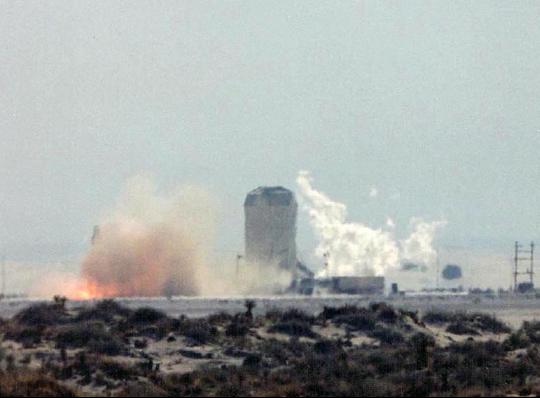 |
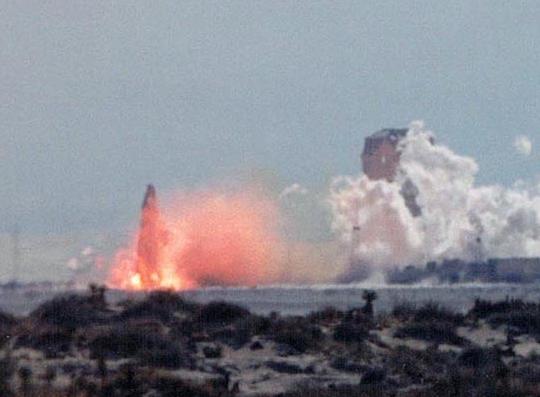 |
|||
Moment of ignition and the explosion, as seen from the viewing site. Liftoff time for Flight 5 was 08:37 MDT. Altitude achieved was 2,600 feet. Flight duration was 78 seconds. |
||
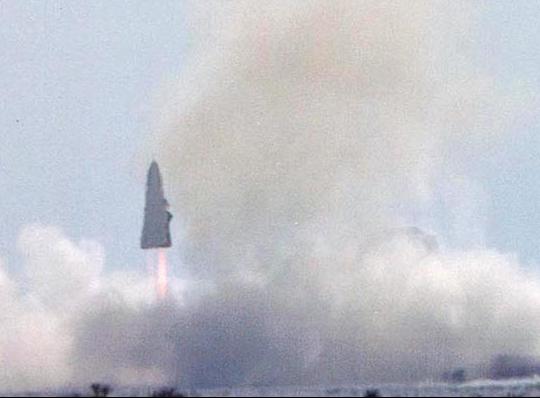 |
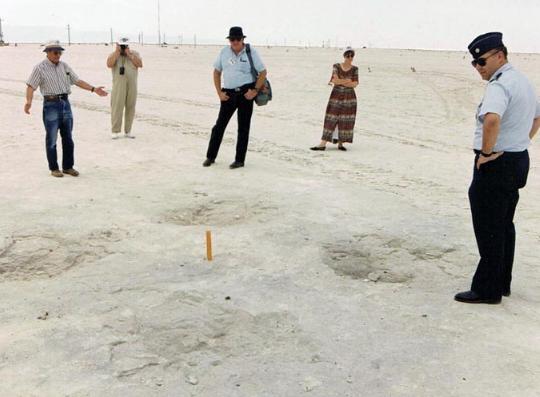 |
|||
Liftoff. The damaged right side of the DC-X is easily seen after the explosion. |
Holes in the gypsum caused by the RL10A-5 rocket engine exhaust at landing. |
|||
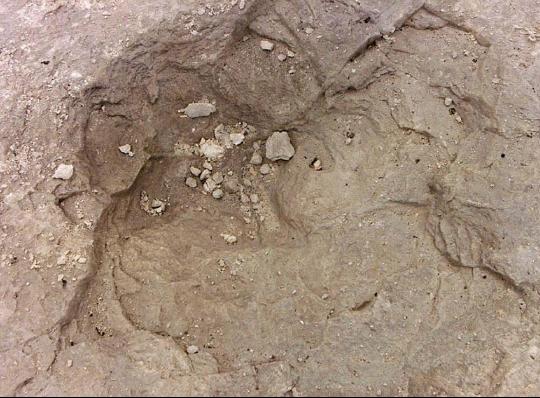 |
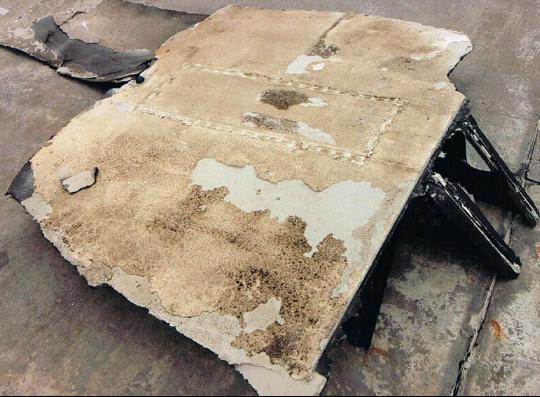 |
|||
Looking down into one of the holes carved in the gypsum. |
The body flap that was blown off at launch. |
|||
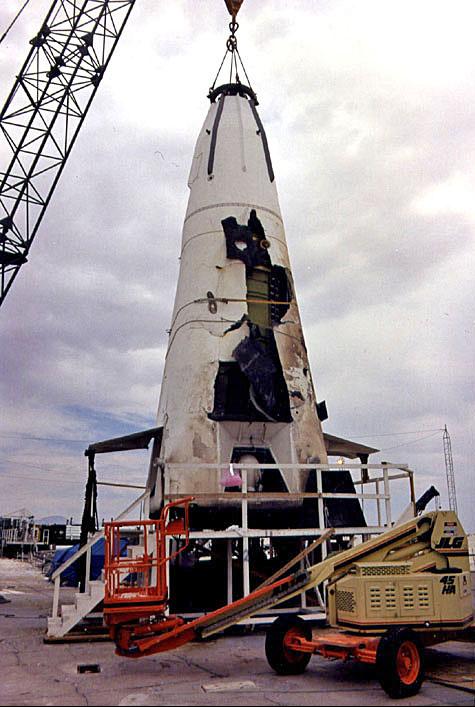 |
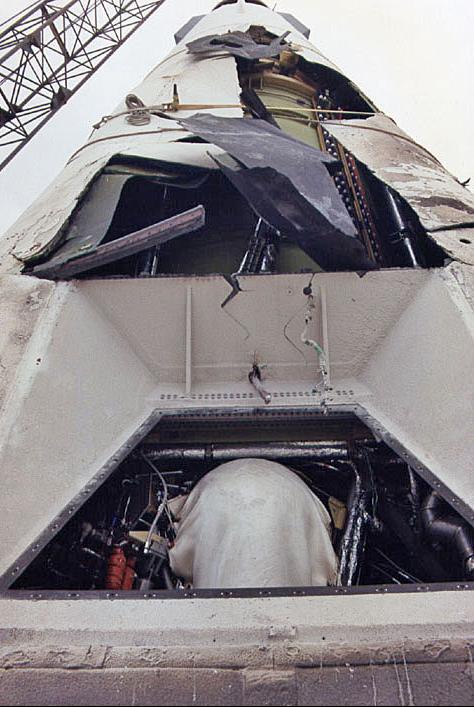 |
|||
Two views of the DC-X showing the major damage to the aeroshell caused by the hydrogen explosion at launch. The image on the right shows where the body flap was located that was blown off, and shown in the photo above. |
||
 |
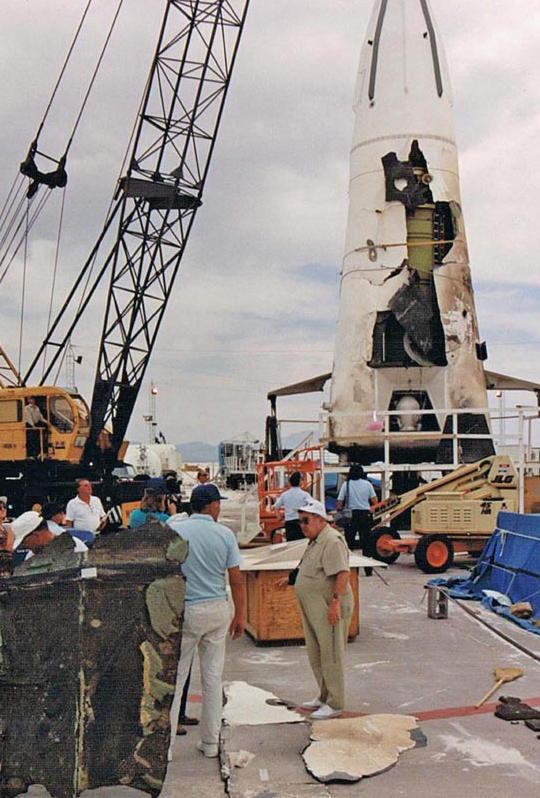 |
|||
Pete Conrad, still happy after testing how robust the DC-X system was. |
The DC-X and various pieces laying about. Author G. Harry Stine is in the white cap. |
|||
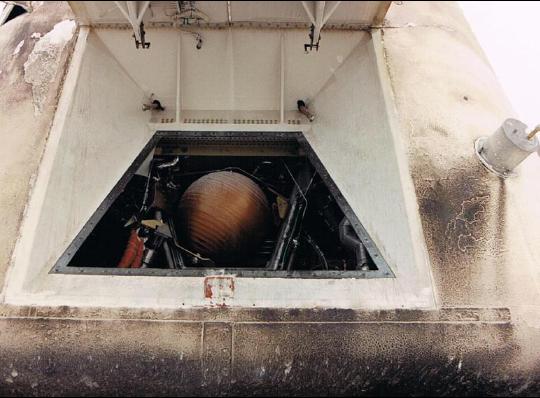 |
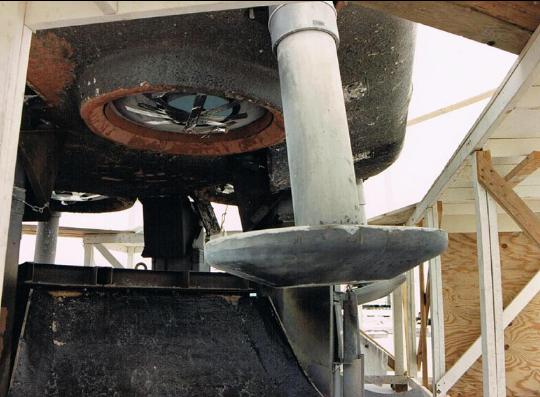 |
|||
A view inside one of the still intact body flap areas. Note the control thuster sticking out of the main body at center right. |
One of the four deployed landing gear. This also affords a good view of the burnt underside of the rocket, and one of the Aerojet Rocketdyne RL10A-5 rocket engines. |
|||
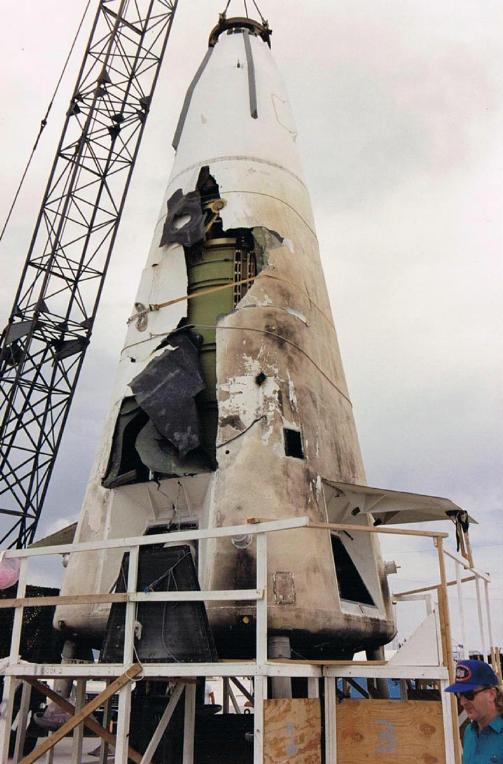 |
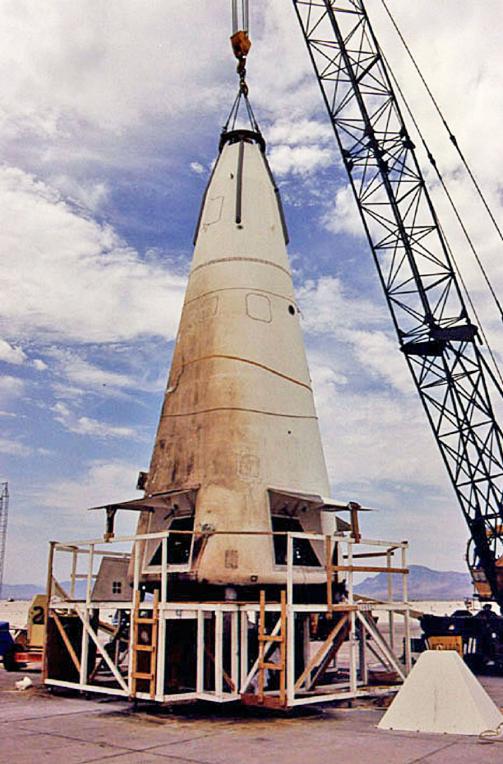 |
|||
Another view of the damaged rocket ship. Note the two open body flaps on each side of the vehicle. |
The "good" side of the DC-X after flight 5. Note the two straps helping to hold the aeroshell together, at about mid-body. |
|||
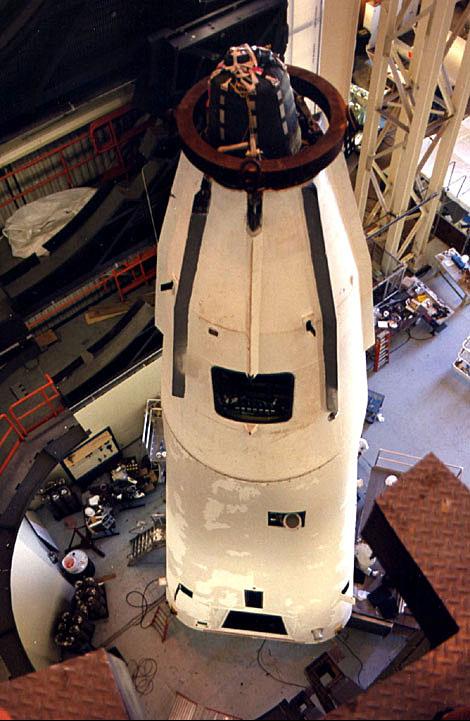 |
|||||||
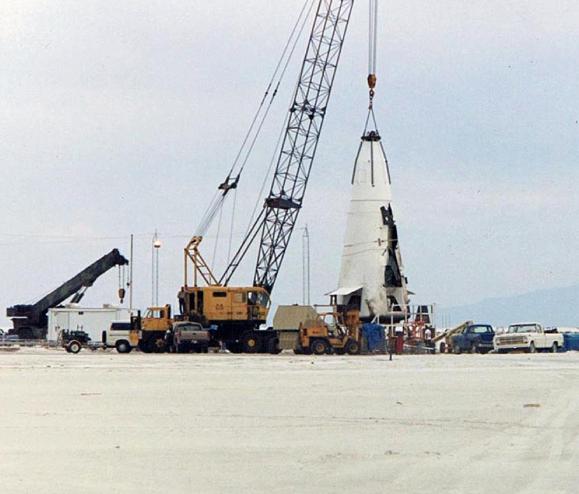 |
|||||||
A last view of the Delta Clipper Experimental out the window of the Army bus, as we daparted the test area, and headed back to the main base at White Sands. |
|||||||
About a month after this flight, in July 1995, the DC-X was finally loaded up on the back of a flatbed truck, and returned to the McDonnell Douglas facility in California, where it underwent an extensive rebuild. The biggest thing was to replace the damaged aeroshell, which was built by Scaled Composites. |
|||||||
DC-X undergoes reconstruction in the MacDac Huntington Beach facility. |
||
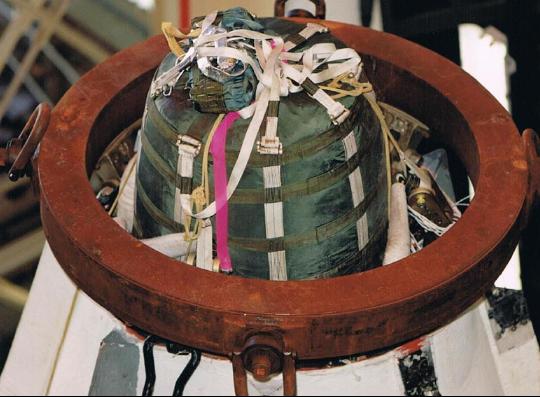 |
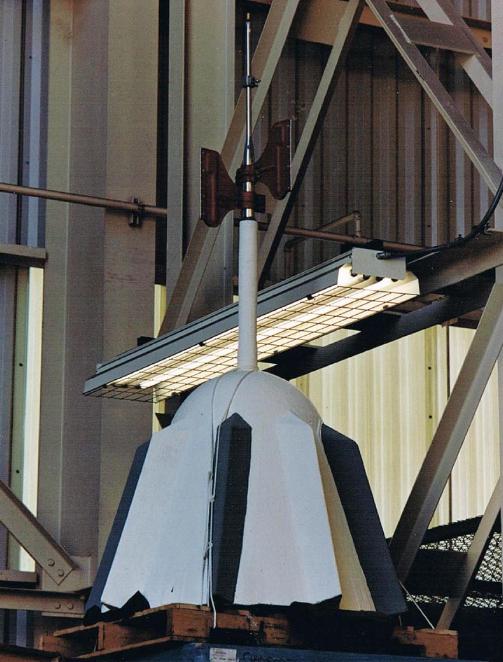 |
|||
The emergency parachute installed in the compartment under the nose cap. The ring around the nose is the lifting fixture for the rocket. |
||||
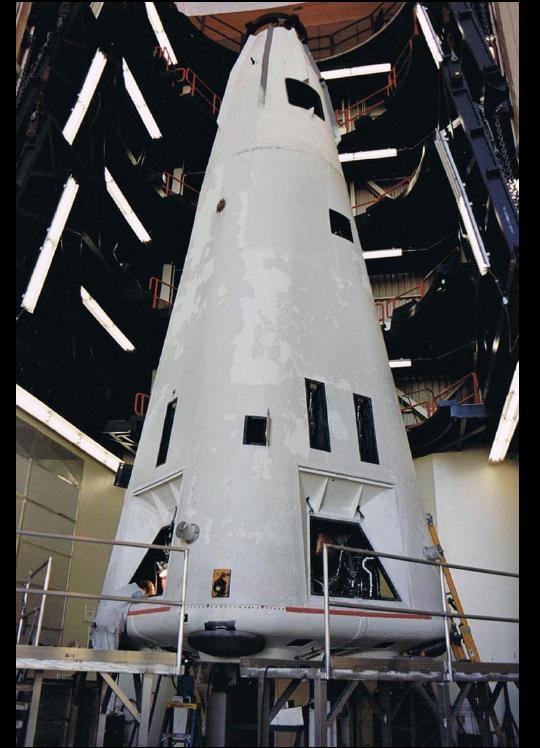 |
||||
The DC-X nose cap awaiting installation. |
||||
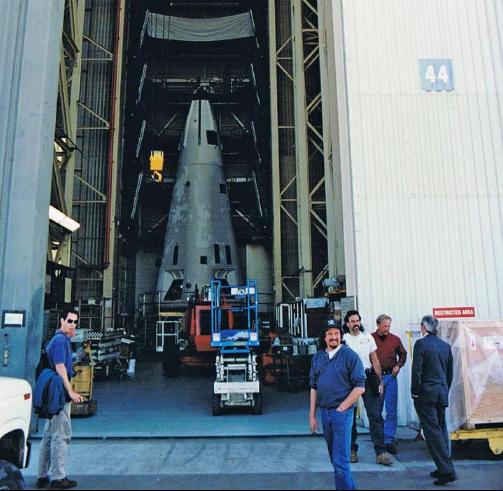 |
||||
A nearly pristine DC-X, sans body flaps. |
The Delta Clipper Experimental comfortably nestled in its construction bay. |
|||
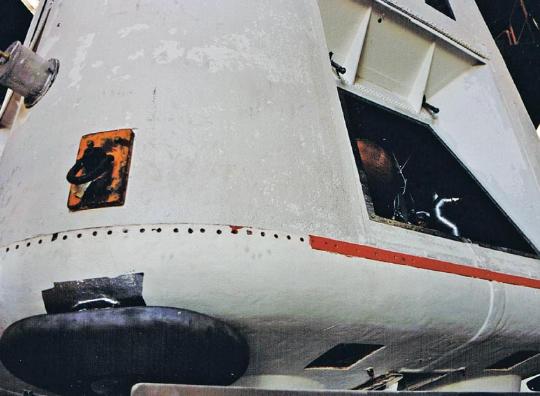 |
||||
Approximately 9 months after being rebuilt, the Delta Clipper Experimental was ready to return to White Sands Missile Range in order to continue flight testing. The next mission would be Flight 6 on 16 May 1995. |
||||
Base of the DC-X with one of the four landing strut pads. |
||